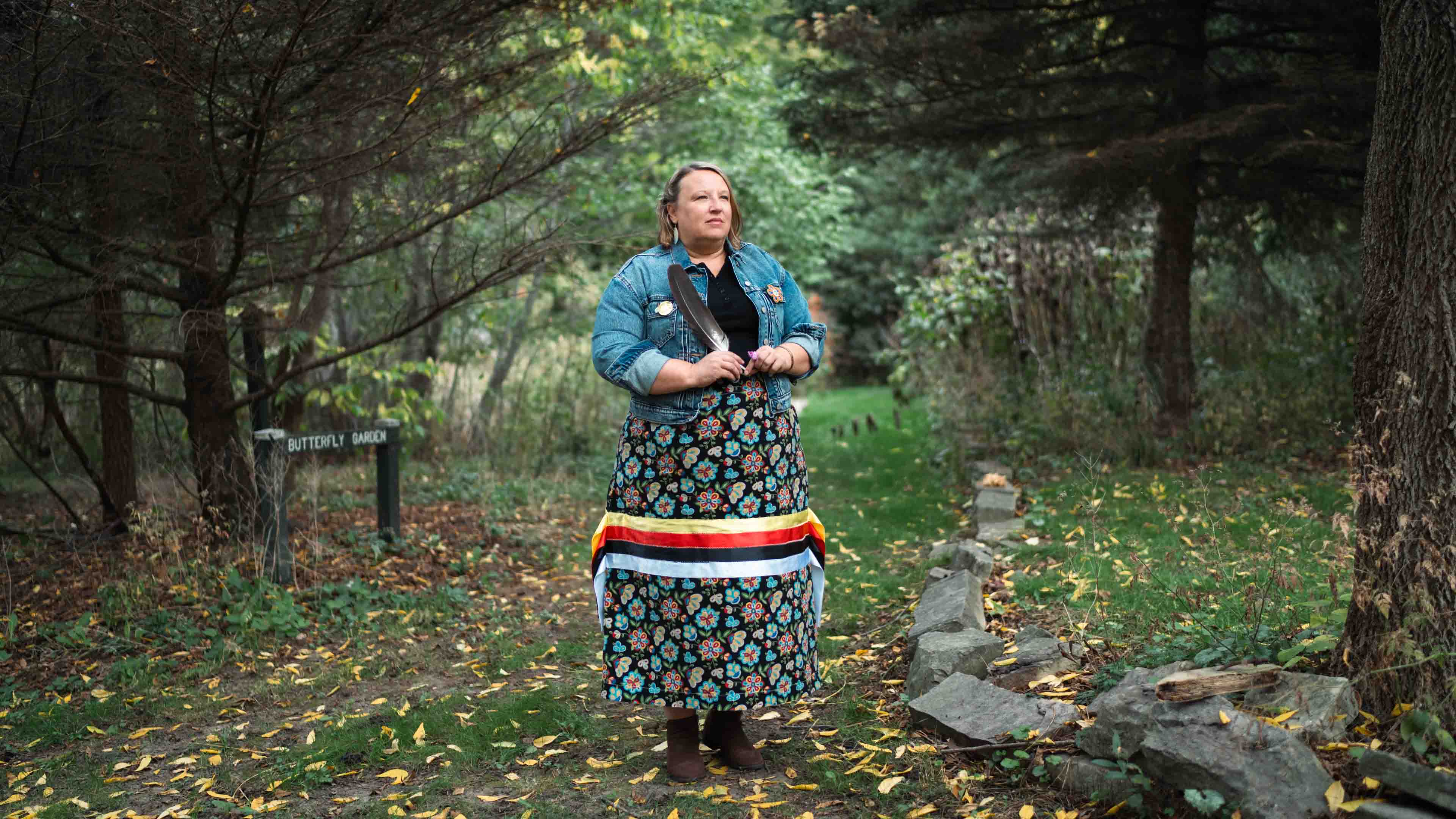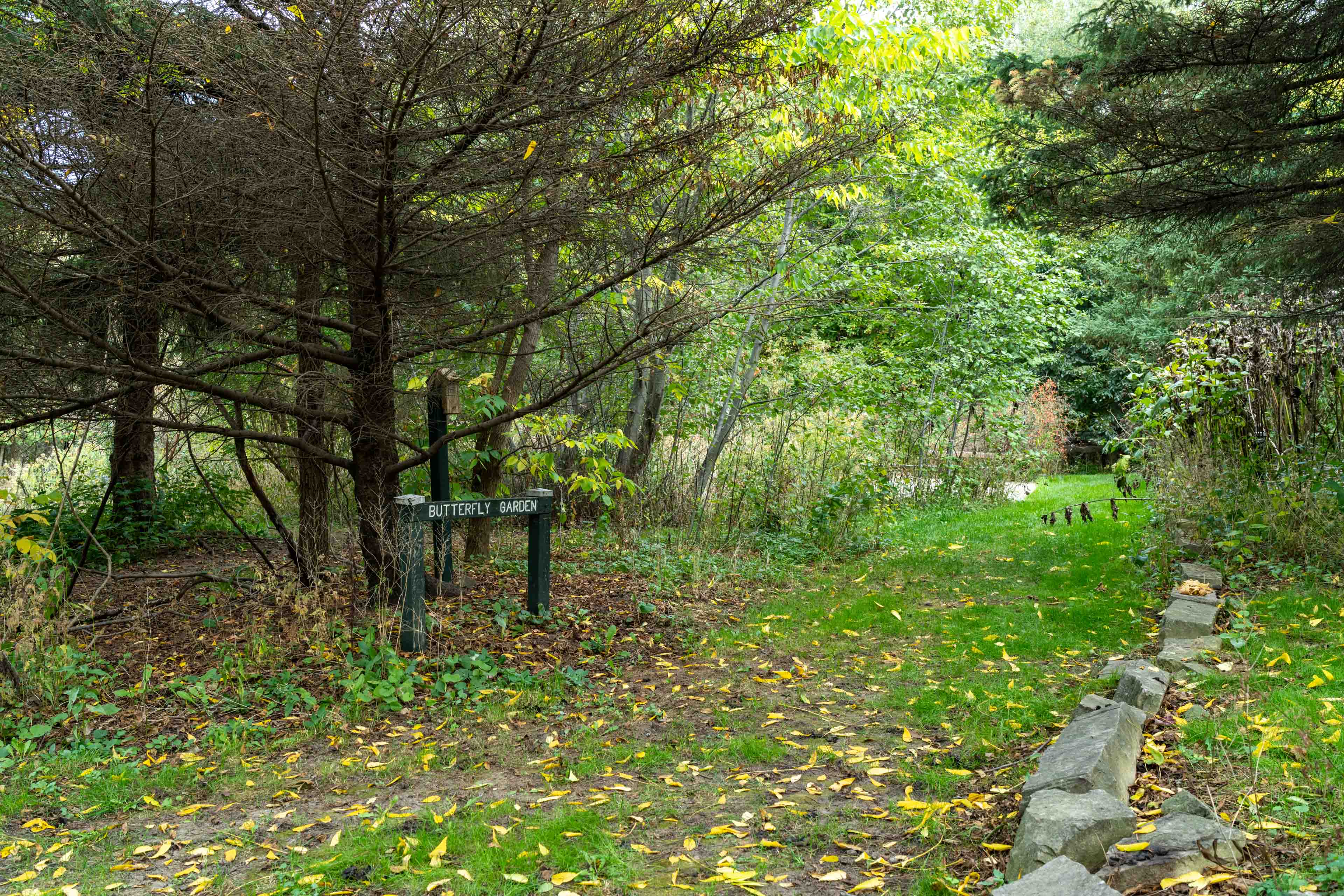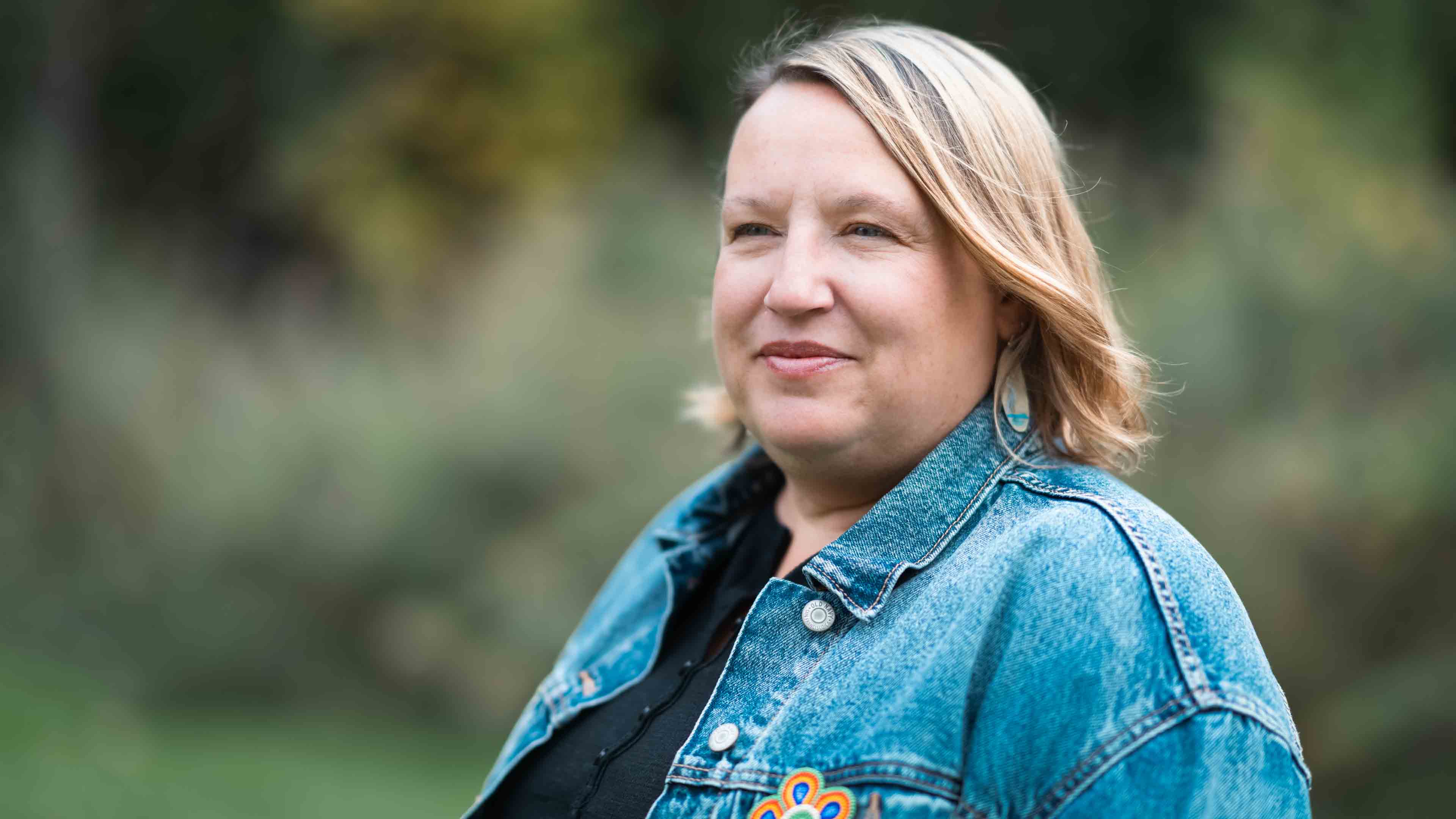Associate Head, Indigenous Early Childhood Education, Early Childhood Studies

Our new Associate Head, Indigenous Early Childhood Education, Maya-Rose Simon, is passionate about guiding students through the Early Childhood Studies program with a fresh perspective; one rooted in Indigenous Ways of Knowing and Being. With a focus on relationships, connection to the Land, and nurturing the whole child, she brings a wealth of knowledge and heart to everything she does.
Learn more about Maya-Rose's work, the Walking with Children initiative, and how she’s helping students experience the beauty of education through an Indigenous lens.
Q: Welcome to the University of Guelph-Humber! We are so glad you’ve joined the Early Childhood Studies program. As the new Associate Head, Indigenous Early Childhood Education, what is your main goal in transforming students’ education through an Indigenous lens?
A: My main goal is to guide students in seeing education as a journey of relationships. When we build relationships with All Our Relations, including the Land, water, animals, plants, and one another, it transforms the way we live and walk on this Land. Through an Anishinaabeg lens, learning is not just about gaining knowledge; it is about reciprocity, respect, responsibility, and gratitude. In our program, I aim to create spaces where Indigenous Ways of Knowing and Being are uplifted and valued. When we honour Indigenous perspectives, we are nurturing the whole child, their mind, body, heart, and spirit, reflecting the wholistic nature of Indigenous knowledge. Sharing my knowledge of walking gently with children, families, and communities is at the heart of this work. What I hope students come to experience is the beauty of Indigenous knowledge. The gentle way we engage with children, the understanding that we are always co-learning alongside them, and the truth that knowledge exchange/education is rooted in kindness. That is the gift of viewing education through an Indigenous lens: it becomes not just about teaching, but about how we choose to be in the world.
Q: You’re a leader with the Walking with Children research initiative at Guelph-Humber. Please explain the significance of this project.
A: Walking with Children is a five-year initiative rooted in Land, story, and relationships. Funded by the Flanagan Foundation, the project is dedicated to supporting and strengthening Indigenous voices within the Early Years sector. We are working alongside Elders, Knowledge Holders, community members, and educators to create space for intergenerational learning, where knowledge flows between children, families, and communities in meaningful ways. One of the ways this vision comes to life is through Doodoom Aki, our Land-based program that begins right here along the Humber River. Together, we will be walking with children, educators, and students, learning from the Land and from each other. Imagine children and students interacting with Knowledge Holders or discovering the stories carried by the water and trees. This type of learning unfolds naturally through connection, observation, and story. At its heart, Walking with Children is about embracing the Indigenous Ways of Being and Knowing, where education is not only about what we teach, but how we choose to live, learn, and walk together on this Land.

Q: You’re proudly Indigenous – Anishinaabeg from the Chippewa Tribe of Sault Ste. Marie, Mich. What is one of the most profound and beautiful aspects from your culture you wish more people were aware of?
A: One of the most beautiful aspects of Anishinaabe culture is our deep connection to the Land. The Land is our first teacher. She shows us how to live in balance, to give back when we take, and to walk with gratitude. Our ceremonies, stories, and teachings are all tied to this relationship. I wish more people understood that this connection is not just cultural, it’s spiritual, physical, intellectual, emotional, and most of all life-sustaining.
Q: How can non-Indigenous members of the U of GH community learn and incorporate principles of Indigenous Ways of Knowing and Being into their lives?
A: It begins with humility and openness. Acknowledging the Land you are on, listening to Indigenous voices, and engaging with community events are all meaningful first steps. But beyond that, it’s really about shifting perspective, seeing the world not just through an individual lens, but through the lens of relationships and responsibilities. In Indigenous ways of Knowing, relationships are at the centre of everything: with the Land, with the water, with the animals and plants, and with one another. Valuing these relationships means slowing down, paying attention, and moving with intention. True learning emerges from observing, listening, and participating in the relationships and interconnections that shape the world. For non-Indigenous members of the U of GH community, this shift may involve approaching your studies, teaching, or daily life with a deeper awareness of interconnection and reciprocity. It’s asking yourself: How am I in relationship with this place, with these people, with this work? How can I walk in a good way as a guest on Turtle Island? Incorporating these principles is less about adding content and more about transforming how you choose to live and learn.
Q: When you’re not hard at work, what do you do in your free time?
A: I spend as much time as I can outdoors with my family, camping, paddle boating, or spending the day at the beach. Being on the Land and near the water grounds me and reconnects me with my teachings. For me, free time is about balance, nurturing the same spirit of care, reciprocity, and joy that I bring into my work.


